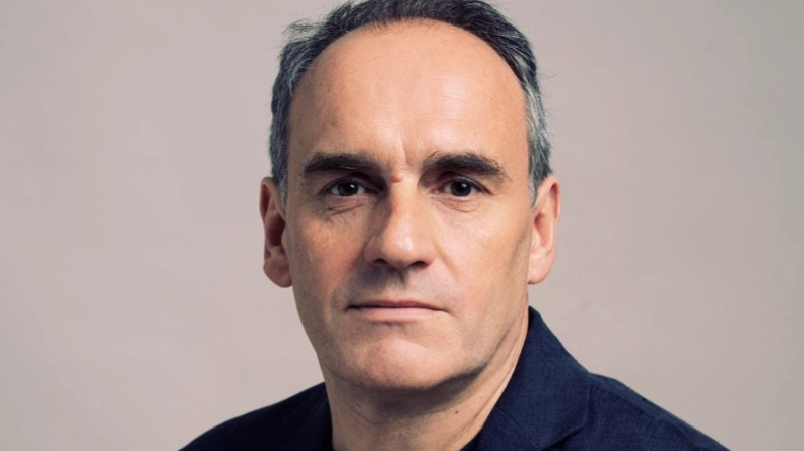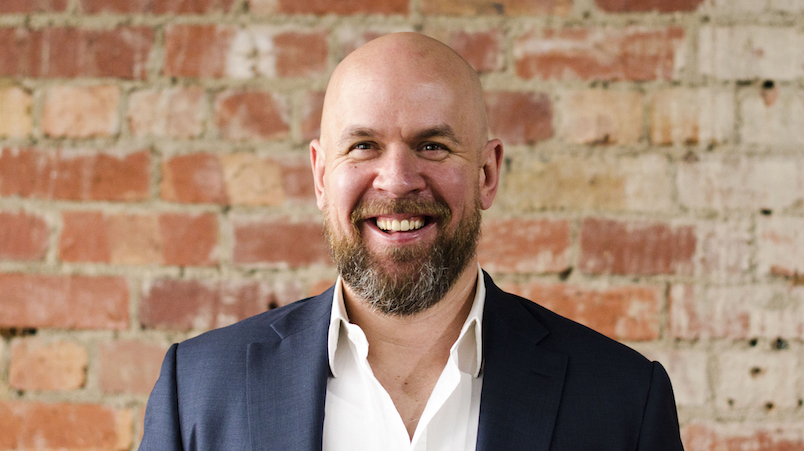‘People’s jobs will be changed’: Salesforce global CMO on how AI agents are the new digital labour force, rapidly reshaping marketing; plus the ‘false precision’ of brand attribution

Salesforce global CMO Ariel Kelman: Use the new tools or get leapfrogged.
It’s less than a year since Salesforce launched autonomous AI agents into the wild. But the bots are already reshaping business functions. In the US, online accounting platform 1-800 Accountants, which handles payroll and book keeping for circa 100,000 firms, has slashed the time staff spend on customer service by 70 per cent. Open Table and Singapore Air are deploying the agents to similar effect. But what are they doing with all that freed human capital? And what are the broader implications for everyone as ‘agentics’ move rapidly through the digital supply chain? Salesforce global CMO Ariel Kelman and colleagues say we will all soon have our own agentics buying – and negotiating prices – for us in online shopping and services. Which has significant implications for business structures and marketing functions and capability in particular. Kelman says we are now looking at a step change in marketing automation beyond content, where the agentic labour force will generate campaign briefs, launch campaigns off those briefs, and self-optimise the creative messaging and channels to deliver on the brief it crafted in the first place. Outside of agentics, Kelman says Salesforce’s new multi-touch attribution model is powering, telling the firm which marketing investments are driving sales and how cost-efficient they are. But not for brand – Kelman thinks it’s pointless trying to attach a dollar value to brand investments in B2B. “It’s just so disconnected from the purchase.” Those attempting to do so, he suggests, are “operating at a false level of precision.”
What you need to know:
- Salesforce has made major inroads into customer service via autonomous AI agents, slashing human costs and time. Now it’s coming for marketing.
- Global CMO Ariel Kelman outlines major implications for business functions – with remits in sales, customer service and marketing rapidly blurring.
- Which has knock-on effects for capabilities.
- Salesforce is effectively on the same page as the likes of Meta and Google – autonomous bots can massively speed decision-making and take out executional layers across paid and owned media, they say, and the money is following.
- But Kelman thinks it can go further, creating personalised dynamic web-page content in an age of agentic commerce that helps drive sales.
- He suggests Salesforce has nailed attribution for performance media – and reckons its custom-built multi-touch attribution is now setting “the standard” for B2B.
- But not for brand investment – which he claims cannot be accurately attributed on a dollar basis.
- Which may make brand the last refuge from the bots. For now.
- Get the full download via the podcast.
If AI gives people productivity gains, what you do with those productivity gains is a management choice … Choice one is that you can get rid of half the people … Choice two is you give the same people more work to do … Option three is that you can do the same amount of work twice as fast … That can be a huge competitive advantage in a marketing context.
Marketing's AI crossroads
Thousands of firms have bought and applied Salesforce’s agentic bots to customer service and sales. Now it’s moving into marketing. Global CMO Ariel Kelman thinks that presents companies with three choices.
“If AI gives people productivity gains, what you do with those productivity gains is a management choice. It depends what your strategy is – let’s say for some tasks you can improve productivity by 50 per cent. Choice one is that you can get rid of half the people and do the same thing in half the amount of time with less people.
“Choice two, which I think we see the most often, is you give the same people more work to do. Because most CMOs I talk to, we have five to ten times the amount of stuff we are being asked to do than we have people to do it – and there is always an appetite to try and do more with the same amount of people," says Kelman.
“Option three is that you can do the same amount of work twice as fast … That can be a huge competitive advantage in a marketing context. It can be a tool to reduce burnout – and you get a lot of burnout in marketing, because we deal with a lot of date-driven activities.” I.e. the hard, immovable deadlines equally beloved by journalists.
Kelman knows this firsthand. Speaking to Mi3 from the sidelines of its Chicago Connections event, he acknowledges the pressure to deliver Salesforce’s massive global events program piles onto his teams. “All the work has to be done by the time it starts. So you get a lot of burnout.”
Hence of the three options outlined, he sees companies taking a mix and match approach, usually of the latter two. “So for my team, for example, we’re able to both do more and give the team a little bit more work-life balance at the same time.”
It behoves the marketing team to be involved in customer service agent implementations to make sure they put the right marketing content in there as well, so they don’t miss an opportunity to find a new customer or upsell someone a new product.
Collapsed silo accelerator
Customer service was the first obvious use case for AI agents due to cost, volume and elegance of a solution that can give customers the answers they need, faster.
“It’s also the easiest use case,” per Kelman. Provided companies are using a system that does RAG “really well”. (RAG is Retrieval Augmented Generation, which means pointing the LLMs at company information and documentation so that customer service bots are giving customers the right answers.)
“But now we’re starting to apply it to different areas – and what is interesting is that some of them are blurring the lines between customer departments.”
He cites Salesforce’s own experiences: Kelman a few months ago set an autonomous agent on the $240bn tech giant’s own website to answer queries like a human and “route leads to our sales people” – 70,000 conversations later, sales teams are spending 40 per cent less time processing leads.
“If you’re a sales leader, you may think ‘that’s a tool to increases the productivity of my SDRs’" AKA Sales Development Reps, the "lower end sales people that all they do is qualify leads ... They take the leads from marketing and hand them to a ‘real’ sales rep, mostly in a B2B context,” per Kelman.
“So is that a marketing product or is that a sales product?”
Hence the blurring of the functional and organisational lines starting to occur more rapidly via AI.
“If a company has a customer service agent deployed and it’s interacting with thousands of customers, what are the odds that they are going to ask a question that is relevant to buying a new product? So it behoves the marketing team to be involved in that customer service agent implementation to make sure they put the right marketing content in there as well, so they don’t miss an opportunity to find a new customer or upsell someone a new product.”
People’s jobs will be changed with AI … The employees that have the creativity to embrace these new tools are really going to jump ahead.
Capability rethink incoming
Blurring of functions and collapsing of silos has deep implications for both capabilities and roles across marketing and beyond.
“I think people’s jobs will be changed with AI. The more power that you have in the tools that we give to employees, the bigger the changes in the jobs,” Kelman acknowledges. Which means getting ahead of the curve or being left behind, he suggests, adding that applies to Salesforce as much as anyone.
“I think we are seeing in some cases … our teams bifurcate into one group of people that are really eager to use these new tools and are working in different ways, and then other groups of people that... just want to do things the same way.”
Kelman cites Salesforce’s announcement six weeks ago that it will acquire cloud data management firm Informatica for $8bn to underline what he means.
“We put together some messaging to explain why we want to buy the company, the benefits to customers, how the products work well together – and wrote up a whole messaging document. One of our spokespeople was prepping for an interview with a reporter. He went and used Google Gemini to create a prompt template to say ‘I’m interviewing with this reporter, give me a mock interview and then score my responses according to my messaging document.’
“So he went away and prepped for a day doing that. I guarantee you that person in his press interview was five times more effective than the exact same person, if they hadn’t been curious on these AI tools and spent 15 minutes to write a prompt."
Mi3 didn't ask how Kelman could offer such specific guarantees, or whether other spokespersons had opted not to take the same AI-augmented approach and were now in trouble. Either way, Kelman is clear on the direction of travel internally, and potentially externally.
"The employees that have the creativity to embrace these new tools are really going to jump ahead of the employees who just want to come to work every day and rinse and repeat.”
If an AI agent can take your creative brief and build the first pass of that super-complicated [customer journey] flow that captures your strategy – and then you are just editing the last 20 per cent – that is a massive win for marketers … But you still have to have the expertise … we are not giving you a black box robot to run all your campaigns and you get to hang on the beach.
To date, “Most of the advanced AI work in marketing has been on the creative and content side”, says Kelman. But now Salesforce is aiming to drive deeper into automation of both process and execution via Marketing Cloud Next, unveiled in Chicago and touting real-time retargeting, dynamic content mods, always-on lead capture and follow-up, plus paid media reallocation – all handled by bots. Not just for ads, but for augmented owned media.
“We have a series of agentic marketing capabilities to go beyond just the creative to actually letting people build campaigns – so having an agent take a brief, set up the campaign for you, launch the campaign and give you analytical tools to optimise it as it’s running. It is talking to your data and having interactive conversations about which segments are performing, how to rebalance spend, and then having website experiences where you have an agent on the website," per Kelman.
“[Which means that] your emails, your ads, can send customers not to a static web page, but to an agent that can have a two-way conversation – and it can have a dynamically created website right next to the agent to illustrate the points that they make,” says Kelman. “So if they’re talking about some products that they want to compare, it’s showing those products right next to them.”
Ultimately, he says, “we’re just trying to replicate what happens when your customers talk to your best employees, but doing it at massive scale.”
Does all of that mean the skills and capabilities honed by marketers over the last decades around journey mapping, for example, are no longer needed?
“I wouldn’t say it’s not needed. It’s like the debate of whether [AI code editing tool] Cursor makes developers go away. No – but if Cursor can do the first 80 per cent, and then the developer is spending their time on the architecture and checking it and tweaking it, they are going to be a 10X developer. The same thing here,” says Kelman.
“Marketers will still need to understand how to create very complex flows for their campaigns. But if an AI agent can take your creative brief and build the first pass of that super-complicated flow that captures your strategy – and then you are just editing the last 20 per cent – that is a massive win for marketers.
“But you still have to have the expertise … we are not giving you this black box robot that is going to run all your campaigns and you get to go hang on the beach.”
Performance steroids
Letting AI handle performance optimisation is a line other platforms, like Meta and Google, are pursuing. Likewise Salesforce – Kelman suggests it’s hard to argue against the logic, speed and efficiency of plugging “lower latency analytics” directly into the machine, and giving it the autonomy to change spend on the fly
“As your campaign launches, if the marketer can go to an agent that has access to the data and ask it ‘what’s performing well, what’s not?’, or have the agent reach out to you [proactively on either front] – think about how much faster that is than the typical approach,” says Kelman.
That traditional approach being: “You look at a dashboard, you see something weird; you ask your analytics team some questions; your analytics team says ‘oh, let me add something to the dashboard’; you find something to change, then you talk to your paid media team and say ‘adjust my spend’. As opposed to having an agent saying ‘Hey, you asked me to look out for low performance segments in this campaign, I found one, would you like me to rebalance the spend by pausing this segment and putting the money across the three that are performing?'”
Which sounds ominous for human media optimiser, but the writing has long been on the wall – at least since Mi3's first edition in 2019.
I’m not a big ‘full funnel’ marketing person. For [performance marketing] … we have the attribution model. But for brand … in B2B it is just so disconnected from the purchase. I just don’t believe in assigning a dollar value [to brand attribution], because I believe it’s operating at a false level of precision.
Brand protected... for now?
Kelman said such agent-driven optimisation applies across email campaigns, SMS and digital ads, running in tandem, with the bots able to make those kind of choices across the lot.
But brand optimisation may, for now, be a different story.
Salesforce has spent significant resource building out its current multitouch attribution model over the last two years – a “custom deep learning model” that assigns credit between all marketing and sales “touches” that lead to a conversion. Developed as a joint initiative between sales and marketing functions, Kelman says the firm is “very happy” with its performance and claims it is becoming recognised as the "standard" for B2B marketing attribution.
But Salesforce doesn’t use that “highly scientific” attribution model for brand.
“This may be somewhat controversial, but I am not a big ‘full funnel’ marketing person. I tend to separate the way we measure advertising between the operational demand generation advertising – where we are trying to generate self-service sign-ups to our products – and for those, we have the attribution model.
“But for brand … in B2B it is just so disconnected from the purchase, that we are looking at it in terms of doing surveys to see if we drive an uplift in awareness, perception and then looking … to make sure that our channels are performing well from a cost efficiency perspective.”
To be clear, Kelman agrees with the likes of Dentsu, Green Hat, Bain-B2B Institute and 6Sense, all of which have published meaty research suggesting brand plays a pivotal role in putting B2B firms on buying committee lists that contain unknown influencers that won’t show up in any lead-gen bucket.
Those “hidden buyers” probably won’t be swayed by functional product attributes – but for whom knowing and trusting the brands on the list is table stakes. The Bain-B2B Institute study suggests $18.7 trillion annually is being decided by such buyers, with half of firms not making the first long-list supplier cut because their brand is not known beyond the techies in the weeds, while "downside risk" is all the upper management stakeholders in that committee care about. In other words, the 2.0 version of "nobody ever got fired for buying IBM".
“I totally agree [with that]. I just don’t believe in assigning a dollar value [to brand attribution], because I believe it’s operating at a false level of precision,” says Kelman. “You are trying to be more precise than the data quality would allow.”
Get the full download via the podcast.







